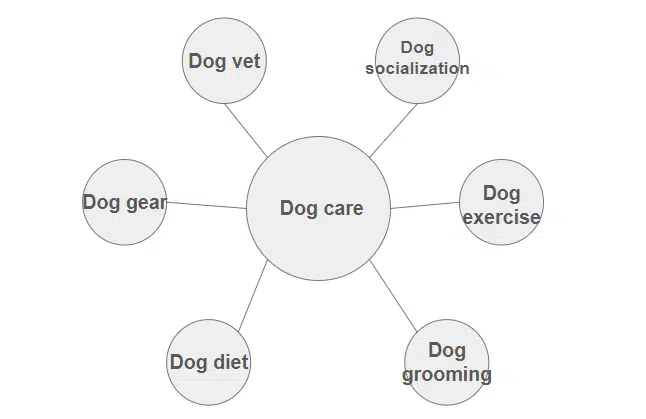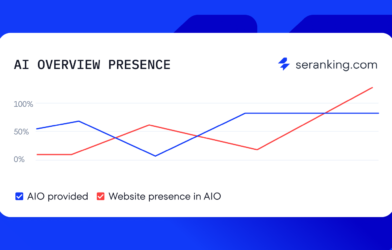Ranking well on Google isn’t just about targeting keywords.
It’s about building topic authority.
One of the best ways to do this is by organizing your content into topic clusters. This strategy helps improve user experience and search engine visibility.
This article will guide you through researching, designing, and using topic clusters to improve your SEO campaigns.
Why your SEO strategy needs topic clusters
Google officially introduced the concept of “topic authority” in May 2023. However, people discussed this SEO concept years before this.
These days, whether Google calls it a ranking signal, a “search system,” or something else, topic authority is critical.
If you’re good at establishing topic authority, you will show up prominently in the SERP.
Fundamentally, this has changed SEO from a keyword-based to a user-based discipline.
Keywords still matter, but are part of a larger topic. This includes user intent, social proof and content from various platforms and media types.
It has also helped reinforce (or, for some, introduce) the concept of topic clusters.
Topic clusters provide order, helping organize website content and improve the user experience (UX). Topic clusters are good for:
- Brands: You can showcase your expertise by going broad, deep or both in a certain topic or multiple topics.
- People: Visitors can find your content.
- Search engines: Google can more easily discover, crawl and rank your content.
There are three keys to building topic clusters:
- How to research your clusters.
- How to design your clusters.
- How many layers to add to your clusters.
Do your research
Yes, this is a basic directive, but it has several meanings when discussing topic clusters.
One area of SEO research is the topic itself: the core service or product (e.g., dog care) with all of its subtopics.
Another factor is the information and subtopics that customers want at each stage of intent. For example, “How much does it cost to have a dog?” is an informational query at the top-of-funnel stage.
The research for each is fairly different. To dig into the core service or product, I recommend:
- Google Trends (or the Glimpse Chrome Extension).
- Google Keyword Planner.
- Ahrefs.
- Competitor site architecture (this is key).
For user-focused content, keyword research is still highly useful, but I would add the following:
- Social media listening tools and platform monitoring.
- Google autocomplete. (What else are users looking for?)
- SERP analysis. (What kind of content is ranking well and thus providing engaging content for users on this topic?)
- Good old-fashioned customer research, even if it’s just talking to your product or customer service teams.
You’re in hunter-gatherer mode here. Gather more information than you think might be necessary. You can always pare it down later.
Dig deeper: Advanced SEO: How to level up your keyword strategy
Get the newsletter search marketers rely on.
How to design your clusters
Consider the hub-and-spoke model
My preferred way to build clusters is the classic hub-and-spoke design:


This structure allows you to add spokes and offshoots for each circle to drill further into subtopics as needed.
You don’t need to keep the same degree of depth consistent. (For instance, dog gear might have five or six sub-topics, while dog exercise might have three or four.)
Regardless, you can see how easily this can also translate to a website architecture.
This is a great starting point for understanding what you need to address within a topic.
Once you’ve developed your hub-and-spoke model, think about how you discuss those themes. Consider what your users need to know based on their stage of intent.
Segment your content by intent (funnel) stage
In each subtopic, we create three segments that are stages in the sales process:
- Top stage: Education and awareness.
- Middle stage: Consideration and research.
- Bottom stage: Making a purchase.
Here’s how those break down:
Top of funnel
- General subtopics.
- Technical/specialized topics without indicators of transactional intent (e.g., bichon frise coat).
- Trending/thought leadership topics.
Middle of funnel
- Pain points and challenges.
- Comparative terms (e.g., best dog shampoo).
- Specific tools, platforms or products.
- Use cases (e.g., dog grooming in a wet climate).
Bottom of funnel
- Terms with modifiers like “buy,” “subscribe,” “demo,” “near me,” “ships free.”
Once those are sketched out, you can create specific content plans to address your topics and subtopics.
Dig deeper: Content mapping: Who, what, where, when, why and how
Align types of content to each intent stage
If you want to target the query “buy dog shampoo for allergies,” don’t make a video on how to bathe your dog. Also, avoid creating a complete buying guide for dog grooming products
At least I wouldn’t.
You also wouldn’t just write about the “10 best dog shampoos for short-haired dogs with allergies” and leave it at that.
Consider where the user is on their purchase journey and what information they want:
- In the mid-funnel, it could be case studies or user testimonials.
- In the upper funnel, it could be topic guides, how-to videos or even a glossary of terms to know.
Once you have that mapped out, you will see where you really need a case study. You may also need a user-generated video review. You might want some product reviews, too. A guide on different types of allergies and their treatments could also be helpful.
How deep into a topic cluster should you go?
One of the benefits of the hub-and-spoke model is that you can drill down into spoke pages targeting high-value keyword groups. (Generally, although not always, the deeper you go, the higher the intent.)
It’s a few steps from dog care to dog grooming to dog skin allergies to dog allergy shampoo. You can see where the last two carry a lot of opportunity to position your brand for consideration.
That said, be careful not to overdo it.
For instance, depending on keyword volume, you may or may not want to get breed-specific for your shampoo.
I rarely see a brand go too deep with topics (it’s usually the other way around).
When spoke pages no longer increase user engagement, it’s time to make changes. You can either update existing content or find new topics to explore.
Always make room for new concepts/ideas.
For example, in the past year, almost every tech-related industry had to either create either a spoke for AI or integrate AI into each spoke.
From topic authority to SEO success: Designing topic clusters that rank
You’re going to strive for perfection with topic clusters, but just know that this is not realistic
Having models that organize your information is a great start. They also help you find gaps to explore further.
- Follow your models.
- Look for different ways to engage your users.
- Practice aligning content with levels of user awareness and intent.
You’ll give your site a good chance to ramp up organic engagement and performance. This also aligns with the direction Google wants the SEO industry to move.
Dig deeper: How to identify and create content pillars that boost brand awareness
Contributing authors are invited to create content for Search Engine Land and are chosen for their expertise and contribution to the search community. Our contributors work under the oversight of the editorial staff and contributions are checked for quality and relevance to our readers. The opinions they express are their own.










